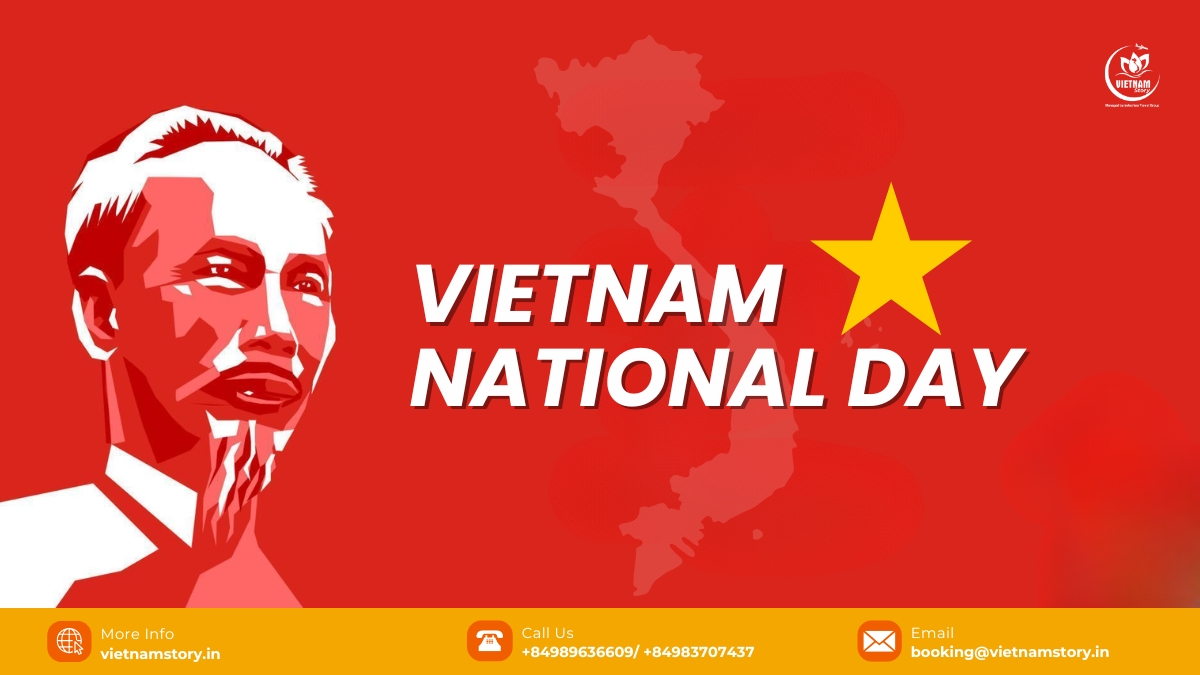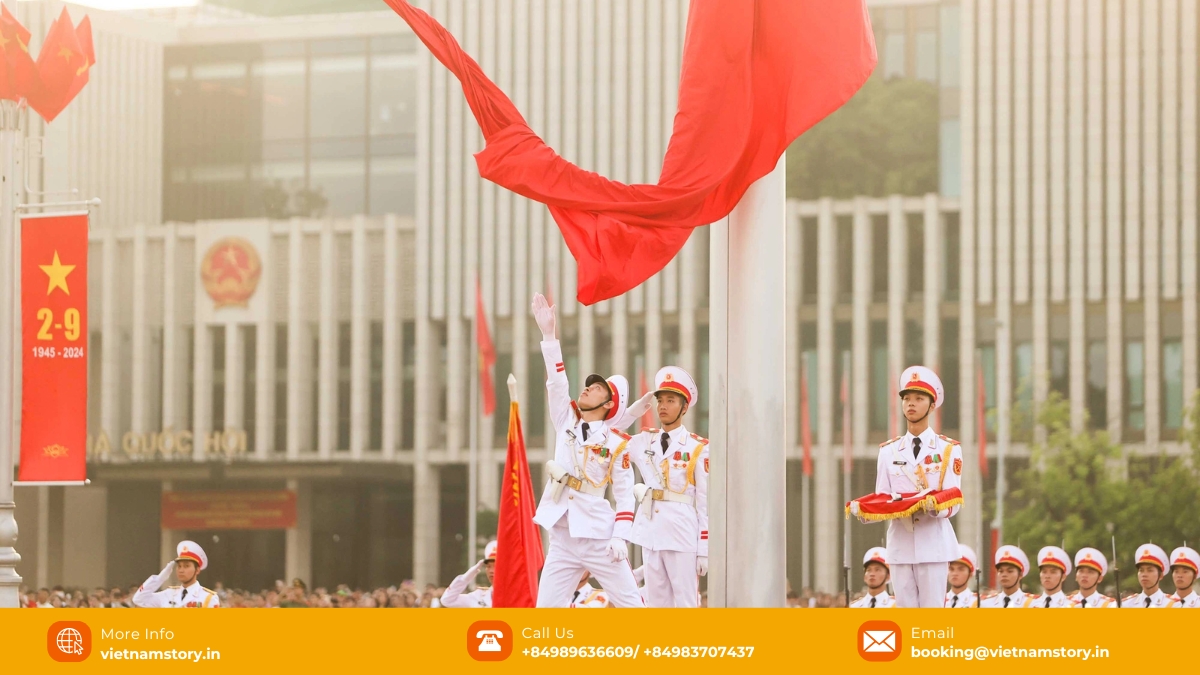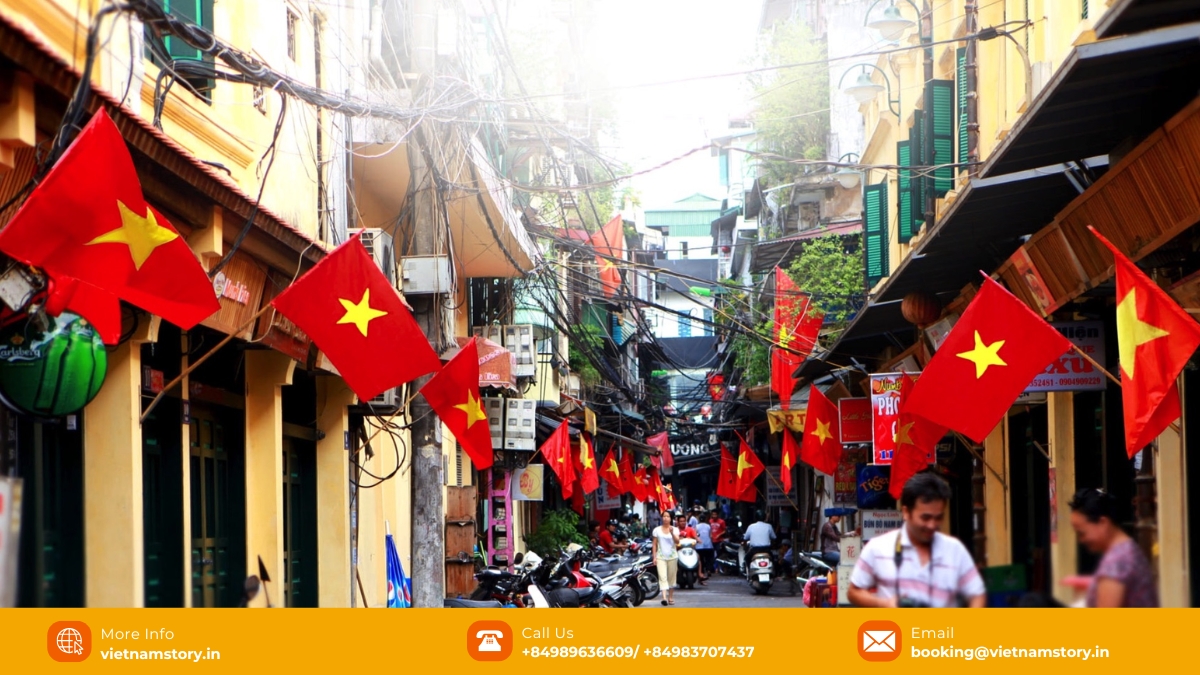National Day Vietnam, celebrated annually on September 2nd, is far more than just a public holiday on the Vietnamese calendar. It’s a profound and vibrant expression of the nation’s enduring spirit, a powerful symbol of its hard-won independence, and a day filled with immense national pride. This significant date commemorates the historic moment in 1945 when President Ho Chi Minh read the Declaration of Independence at Ba Dinh Square in Hanoi, marking the birth of the Democratic Republic of Vietnam and fundamentally shaping modern Vietnamese history. For visitors from India and around the world, experiencing Vietnamese Independence Day offers an unparalleled opportunity to immerse yourselves in the country’s dynamic culture, connect deeply with its past, and witness firsthand the celebrations that honour its journey to freedom.

Understanding the Roots: The Historical Significance of September 2nd
To truly appreciate the depth and fervor of National Day Vietnam, understanding its historical significance is crucial. Vietnam endured decades under French colonial rule, a period marked by hardship and the suppression of Vietnamese identity. However, this era also ignited the flames of Vietnamese nationalism, culminating in a powerful movement striving for self-determination.
The turning point arrived with the August Revolution in 1945. Amidst the global turmoil of World War II and the weakening grip of colonial powers, the Viet Minh, led by the visionary Ho Chi Minh, seized the opportunity. This revolution galvanized the Vietnamese people, uniting them under the common cause of freedom and laying the groundwork for a new nation.
READ MORE: Vietnam’s Festive Calendar: A Journey Through Tradition and Celebration
A Defining Moment: Ho Chi Minh’s Declaration of Independence
On September 2, 1945, a date forever engraved in the nation’s heart, President Ho Chi Minh stood before vast crowds gathered at Ba Dinh Square in Hanoi. There, he delivered the historic Declaration of Independence. This powerful document proclaimed Vietnam’s sovereignty, asserting the fundamental right of the Vietnamese people to self-governance and freedom from foreign domination. It articulated the aspirations born from decades of struggle.
The declaration resonated globally, becoming a landmark event in the post-war decolonization movement. Crucially, it marked the official birth of the Democratic Republic of Vietnam (now the Socialist Republic of Vietnam), signifying a new era of independence and nation-building, a journey that continued through years of conflict, culminating in national unity on Reunification Day Vietnam in 1975.

How Vietnam Celebrates: A Nationwide Tapestry of Patriotism
National Day Vietnam is characterized by vibrant, nationwide celebrations showcasing deep patriotism and unity. Key activities include:
- Official Ceremonies in Hanoi: The heart of the official commemoration is Ba Dinh Square. Witness the solemn early morning flag-raising ceremony, a deeply moving event. Grand military parades often showcase national strength and unity, accompanied by speeches from leaders reflecting on Vietnam’s journey.
- Patriotic Displays Nationwide: Across Vietnam, cities, towns, and homes burst with colour. The national flag is displayed proudly everywhere. Streets are adorned with banners, flowers, and posters of Ho Chi Minh, creating a festive and patriotic atmosphere.
- Fireworks Extravaganzas: Major cities like Hanoi and Ho Chi Minh City host spectacular fireworks displays on the evening of September 2nd. Crowds gather at key vantage points, such as near Hoan Kiem Lake in Hanoi or along the Saigon River in Ho Chi Minh City, to enjoy the dazzling shows.
- Cultural Performances and Events: Live music concerts, traditional dance performances, and community gatherings occur throughout the country, offering joyful ways for people to celebrate together.
- Family Gatherings: Like many important holidays, National Day is also a time for families to come together, share meals featuring traditional Vietnamese food, and reflect on their nation’s history.
Experiencing National Day as a Tourist from India
Visiting Vietnam during National Day on September 2nd offers Indian tourists a unique and enriching travel experience. It’s a chance to witness Vietnamese culture and history come alive in a truly special way. The festive atmosphere is infectious, and the displays of national pride are unforgettable.
Top Places to Experience the Festivities:
- Hanoi: As the capital and the site of the Declaration, Hanoi offers the most historically resonant experience.
- Visit Ba Dinh Square for the solemn ceremonies (arrive early).
- Pay respects at the Ho Chi Minh Mausoleum (check opening times, which can be restricted during holidays).
- Wander the decorated streets of the Hanoi Old Quarter and soak in the atmosphere around Hoan Kiem Lake.
- Ho Chi Minh City: Experience the modern, high-energy celebrations in Vietnam’s largest city.
- Witness the spectacular fireworks display over the Saigon River.
- Join the crowds on the vibrant Nguyen Hue Walking Street for street performances and festivities.
- Visit the historic Independence Palace (Reunification Palace), significant in later Vietnamese history.
- Hoi An: For a more intimate feel, the ancient town glows with lanterns, and special events often take place along the Thu Bon River.
- Hue: Explore the Imperial City, decorated for the occasion, and enjoy the unique historical ambiance of the former capital.
Practical Tips for Travellers:
- Book Accommodation and Transport Early: National Day is a major public holiday, so flights, trains, and hotels get booked up well in advance. Plan ahead!
- Expect Crowds: Popular sites, especially in Hanoi and Ho Chi Minh City, will be very crowded. Be prepared for queues and busy streets.
- Transportation: Internal travel might face disruptions or higher demand. Factor in extra travel time.
- Embrace the Atmosphere: Be open to joining the celebrations, interacting respectfully with locals, and soaking in the unique energy of this important day.
READ MORE: Unveiling the rich tapestry of Vietnamese Culture: A Journey for the senses
Beyond the Celebration: Deeper Context
Interestingly, September 2nd also holds another layer of significance. It marks the date of President Ho Chi Minh’s passing in 1969. Initially, his death was announced on September 3rd to avoid coinciding with the joyous National Day celebrations. It wasn’t until 1989 that the official date of his passing was confirmed as September 2nd, adding a layer of solemn remembrance for many Vietnamese alongside the celebration of independence.

Conclusion: A Must-Experience Event in Vietnam
National Day Vietnam on September 2nd is more than a date on the calendar; it’s a vibrant, powerful celebration of independence, resilience, and national unity. It encapsulates the spirit of Vietnam, born from a history of struggle and triumph. For travellers from India, witnessing the parades in Hanoi, the fireworks in Ho Chi Minh City, or the nationwide displays of patriotism offers an unforgettable insight into the heart and soul of the nation. By understanding the historical significance behind the Declaration of Independence read by Ho Chi Minh at Ba Dinh Square, and engaging respectfully with the celebrations, you gain a profound appreciation for Vietnam’s journey. Consider planning your Vietnam adventure around this special occasion for a truly memorable cultural immersion.